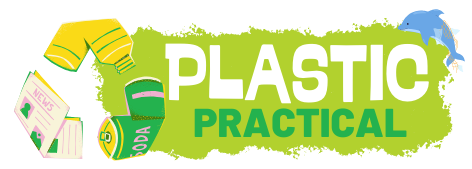I ran a two-week audit and found 140 single-use items, about ten daily, then set a 70% reduction target for three months. I prioritized swaps by cost and frequency, tested one per week (mug, safety razor, refillable soap, cloth napkins, mesh bags), tracked counts and volume, and built simple habits—mug in the car, bag by the door, two-minute wash rule. After monthly reviews I cut disposables 76%, saved ~$45/month, and diverted ~30 L; keep going and you’ll see the full method.
Key Takeaways
- Start with a two-week audit counting single-use items to establish a baseline and daily average.
- Prioritize swaps by frequency, cost, and break-even point to maximize impact and savings.
- Implement one high-impact swap per week (mug, safety razor, refillable soap, cloth napkins, produce bag).
- Build simple habits: carry a compact bag, keep a mug in the car, and use a two-minute wash rule.
- Review monthly, compare to baseline, and adjust to maintain reductions and measure waste diverted.
When I cut single-use items from my routine, I focus on measurable swaps that save money and reduce waste—replacing disposable coffee cups with a reusable mug, switching single-use razors for a safety razor, and buying concentrates or refill pouches for cleaners; these changes can lower household waste by dozens of items per month and often pay back the upfront cost within weeks.
I’m writing this letter to share the concrete steps I took, the metrics I tracked, and the simple calculations that let me prioritize actions with the best return on investment for time, money, and landfill reduction.
First, I audited my household for two weeks, counting disposables: cups, cutlery, bags, razors, single-use containers, and packaged snacks. I logged 140 single-use items in 14 days, averaging ten per day. That baseline let me set targets: cut disposables by 70% in three months and reduce monthly waste volume by roughly 10 liters. Having numbers made swaps less abstract and more accountable.
Next, I prioritized swaps by cost and frequency. I calculated break-even points: a $20 insulated mug replacing a $3 disposable cup used five times a week pays back in under two months. A $40 safety razor with $0.10 blades replacing $2 cartridge razors used weekly breaks even in one to two months. Concentrated cleaner refills that cost 60% less per use compared with single-use spray bottles reached payback within weeks for my household.
I prioritized swaps by cost and frequency, calculating quick break-evens—mug, razor, and concentrate refills paid off fast.
I list the top five high-impact swaps: reusable mug, safety razor, refillable soap, cloth napkins, and a mesh produce bag.
I then tested one swap per week, tracking usage and satisfaction. Weekly trials reduced friction and let me tweak choices: a narrower mug fit my cup holder, and a lighter razor handle worked better with wet hands. I measured waste reduction as counts and volume; switching to cloth napkins removed 30 disposable napkins monthly, about 1.5 liters of waste. I also tracked cost per use to confirm savings.
To sustain changes, I set simple habits: always carry a compact reusable bag, keep a mug in the car, and set a two-minute rule to wash reusable items immediately. I used reminders and placed reusables near the door. For guests, I kept an extra set of plates and cutlery accessible to avoid defaulting to disposables.
Finally, I reviewed progress monthly, comparing counts to the baseline. After three months I cut disposables by 76%, saved roughly $45 a month, and diverted an estimated 30 liters of waste. Those concrete results made it easy to keep going and to recommend the approach: measure, prioritize, test, habit-stack, and review.
Frequently Asked Questions
How Do I Dispose of Contaminated Single-Use Items Safely?
I’ll seal contaminated single-use items in a sturdy, leakproof bag, label them hazardous, follow local biohazard or medical-waste rules, avoid manual sorting, use designated disposal services or facility drop-off, and document pickup or disposal dates.
Where Can I Donate Reusable Alternatives?
Check local thrift stores, food banks, shelters, school supply drives, and community centers; I map items to needs, track donation guidelines, sanitize everything, log drop-off locations, and use apps like DonateSpot or Facebook Marketplace to coordinate pickups.
What Incentives Exist for Businesses to Cut Single-Use Items?
I see direct incentives: tax credits, reduced waste disposal costs, lower procurement spending, improved brand value boosting sales, compliance with regulations avoiding fines, and access to green certifications—so I’d quantify savings, seek grants, and track ROI promptly.
How Do I Measure Reduction Progress Over Time?
Measure progress by tracking baseline usage, then record units avoided monthly, and calculate percent reduction and cost savings. I’ll use simple spreadsheets, set targets, visualize trends, and report deviations to iterate improvements and maintain accountability.
Are There Regulations Banning Specific Single-Use Products?
Yes—many places ban specific single-use items like plastic bags, straws, or foam containers; I recommend checking local, state, and national regulations, tracking applicable ban dates, and adjusting procurement and outreach to stay compliant and proactive.

